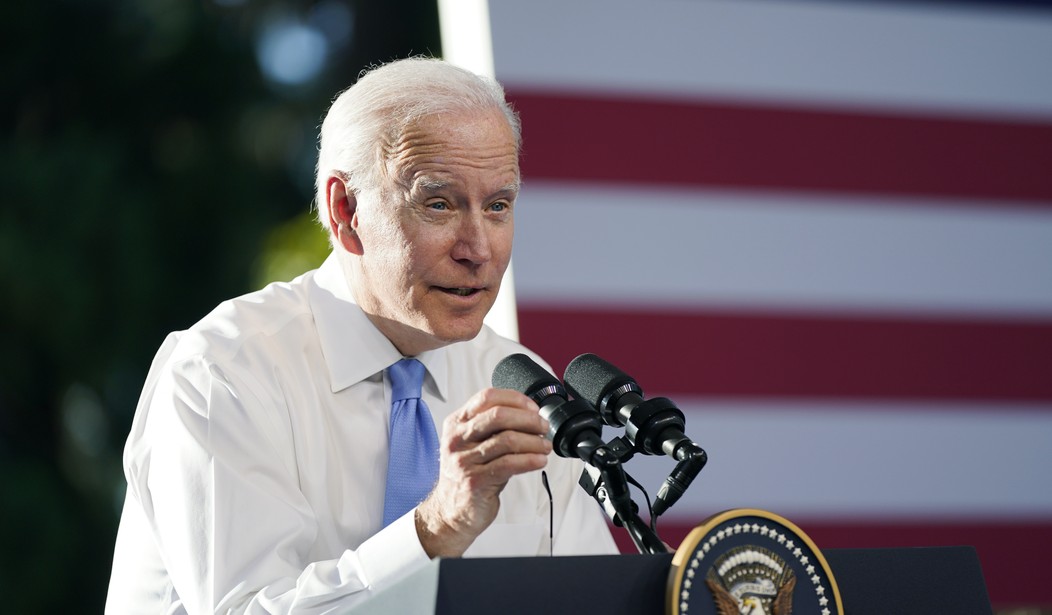The New York Times reports this as a success of GOP messaging. It might rather be the recognition of economic reality. A majority of those surveyed in an NYT/Momentive poll want an immediate end to the pandemic-related unemployment benefits that have stalled rehiring and contributed to supply-chain issues now hammering consumers in the marketplace:
Critics, including many business owners and Republican politicians, argue that the extra benefits are discouraging people from looking for jobs and making it hard for businesses to find workers. Proponents, including progressive groups and many Democratic politicians, contend that the benefits are needed as the economy continues to heal and while pandemic-related risks remain.
Republican arguments seem to be resonating with the public. Just over half of Americans — 52 percent — want the extra benefits to end immediately, according to a survey of 2,600 adults conducted this month for The New York Times by the online research firm Momentive, which was previously known as SurveyMonkey. Another 30 percent want the benefits to end in September as planned. Only 16 percent want the additional benefits to continue indefinitely.
Views on the benefits are divided along partisan lines. Of Republicans, 80 percent want the extra benefits to end right away, compared with 27 percent of Democrats. But even among Democrats, most respondents don’t want the benefits to last past September.
And for good reason. Initial jobless claims levels have stalled at the 400K level, too high for a healthy economy, but that only tells a small part of the story in the job market. The real problem with the labor market is the continuing claims in the pandemic-relief programs — still over 11 million as of the week ending June 5, even though almost all businesses are fully open at this point.

Note well that the level of continuing claims in these programs is only about 1.4 million lower than the same period last year — when lockdowns and restrictions were the norm across the entire US. At that point, workers couldn’t find jobs even if they were inclined to take whatever was available. At the end of April, as the Bureau of Labor Statistics reported three weeks ago, the US had 9.3 million job openings and businesses were getting desperate to fill slots in order to service rising demand.
The problem is that demand may not be rising for very long. Personal income dropped again in May, and consumer spending went flat while prices rose:
Personal income decreased $414.3 billion (2.0 percent) in May according to estimates released today by the Bureau of Economic Analysis (tables 3 and 5). Disposable personal income (DPI) decreased $436.3 billion (2.3 percent) and personal consumption expenditures (PCE) increased $2.9 billion (less than 0.1 percent).
Real DPI decreased 2.8 percent in May and Real PCE decreased 0.4 percent; goods decreased 2.0 percent and services increased 0.4 percent (tables 5 and 7). The PCE price index increased 0.4 percent. Excluding food and energy, the PCE price index increased 0.5 percent (table 9).
This is again the hangover from the sugar high of the third COVID-19 stimulus/relief package. It spiked demand, which also created significant inflationary pressure while the pandemic-UI programs kept supply restricted. The time to get workers back into jobs was that moment, when demand supported hiring. If demand and disposable income start to tail off while prices rise, September might be far too late for those disincentives to disappear.
And make no mistake — inflation is getting real and potentially spectacular:
A key inflation indicator that the Federal Reserve uses to set policy rose 3.4% in May, the fastest increase since the early 1990s, the Commerce Department reported Friday.
Though the gain was the biggest since April 1992, it met the Dow Jones estimate and markets reacted little to the news. Stock market futures indicated a rise of about 150 points for the Dow at the open, while government bond yields were mostly flat.
The core personal consumption expenditures price index increase reflects the rapid pace of economic expansion and resulting price pressures, and amplified how far the nation has come since the Covid pandemic-induced shutdown of 2020.
Though the reading could add to inflation concerns, Fed officials continue to insist that they see the current situation as temporary and likely to abate as conditions return to normal.
The inflationary pressure is likely to dampen demand and slow down job creation, especially while supply-chain issues continue. Yesterday, Joe Biden somewhat-incoherently bragged that these programs put money into the hands of consumers and give workers more leverage with employers:
Remember you were asking me — and I’m not being critical of you all; I really mean this. It was legitimate questions you were asking me — asking me, “Well, you know, guess what? Employers can’t find workers.” I said, “Yeah. Pay them more.” This is an employee’s — employee’s bargaining chip now what’s happening. They’re going to have to compete and start playing [sic] hardworking people a decent wage.
And, by the way — talking inflation — the overwhelming consensus is it’s going to pop up a little bit and then go back down. No one is talking about, “This great, great deal.”
So, again, if it turns out that what I’ve done so far — what we’ve done so far is a mistake, it’s going to show. It’s going to show. The economy is not going to grow, like it wasn’t before. People aren’t going to have jobs with increased pay, like it was before. People are going to be out of work, like it was before, with no options. Unemployment is going to continue to climb, instead of continue to go down. If that happens, then my policies didn’t make a lot of sense, but I’m counting on it not. That’s my counting how it’s working.
Good luck with that. This leverage about which Biden brags is entirely artificial, thanks to the perverse incentives from temporary emergency measures that have long outlived their usefulness. What happens when these programs end, especially if these job openings start drying up due to inflation and supply-chain issues? We will have millions of people flooding back into the job market without any place to land, and that leverage will dissipate like any fantasy exposed to the light of reality. Let’s also not forget that at that point those workers won’t be eligible for any unemployment insurance, meaning we will have a large number of Americans without any safety net at all.
The faster we rip off this Band-Aid, the better. Do it now while those job openings still exist, and while we can resurrect demand by solving the supply-chain issues. Otherwise, we’re in for an ugly autumn.








Join the conversation as a VIP Member